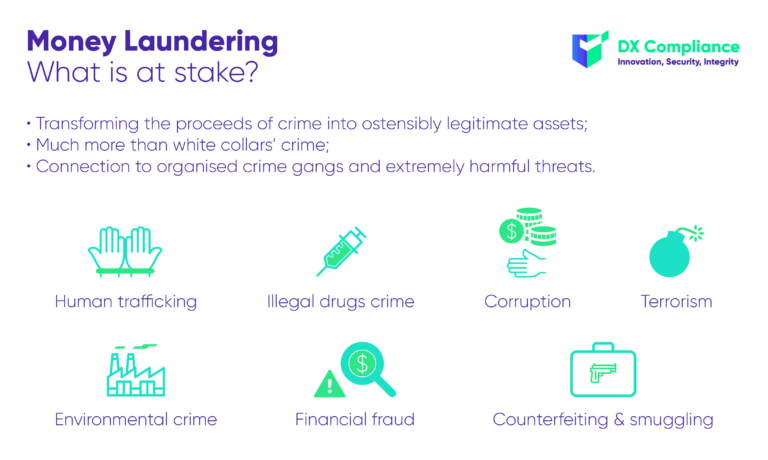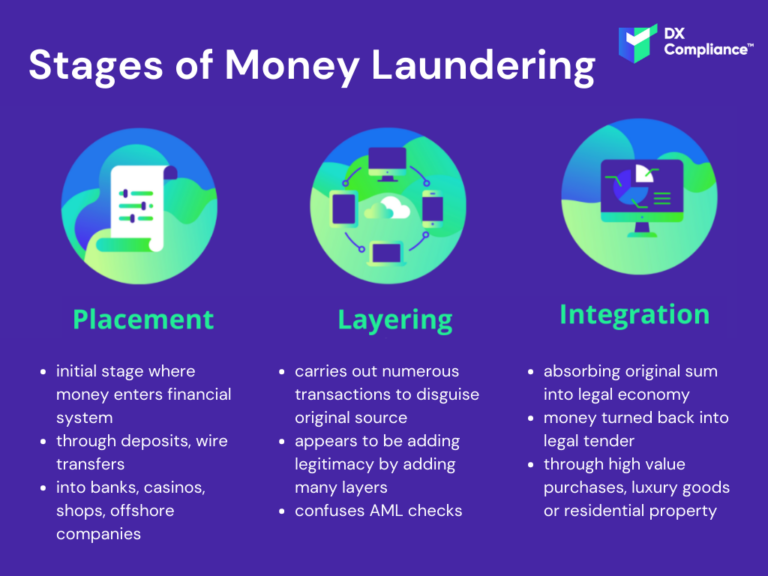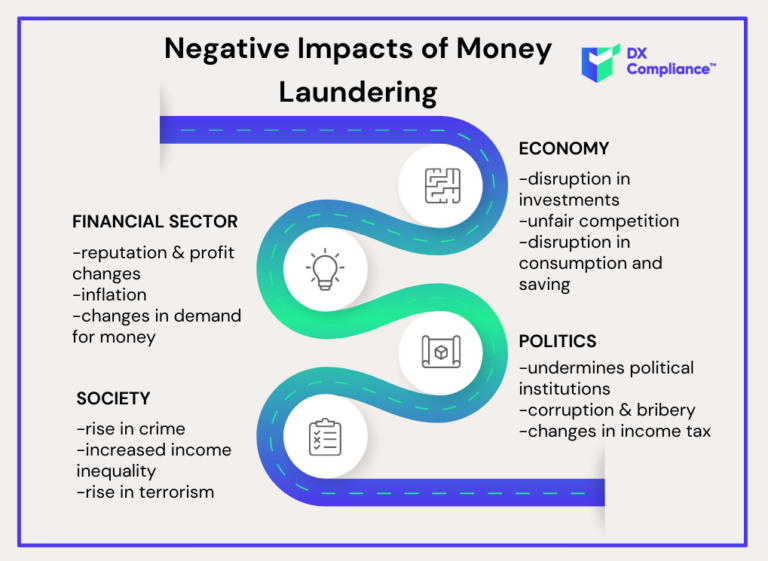6 December 2022, 10:00
Tagline
6 December 2022, 10:00
Tagline
Money laundering is the process of “washing” illicitly earned money into clean money to disguise its original source. There are many stages of money laundering, which will be explained in this blog. The stages create a process involving an underlying, profit-making crime, such as organised crime, fraud, drug trafficking. It is the concealing, transferring or converting the proceeds of this crime.
The aim of money laundering is to integrate the “dirty” money back into the normal financial system, allowing criminals to profit and live from illicit funds. Criminals want to conceal the origins of the money, to allow people to use it in the same way most of us would use hard-earned money.
The United Nations Office on Drugs and Crime (UNODC) estimates are that roughly only 1% of all laundered money is detected. This is a global problem and allows people to profit from organised crime, human trafficking and weapons smuggling.

There are three distinct stages of money laundering:
Each stage is crucial for the process of money laundering. Each of the three stages can occur simultaneously, separately or they can overlap. However, it is important to note that the offence of money laundering will occur during each individual stage. The FATF report on Money Laundering explains each stage of the process.

This initial stage is crucial to the of the money laundering process as it is when the money earned by criminal acts enters the financial system. This can be done through deposits, wire transfers, or other means. The money is placed into the financial system through banks, casinos, shops, offshore businesses and other businesses in the placement stage.
This phase can be done by breaking up the original sum of money into many smaller sums and depositing them directly into bank accounts. This can help to disguise the illicitly earned money and reduce the risk of detection. It can also involve transporting cash across borders to deposit the money in financial institutions abroad, or buying precious goods like artwork, antiques, diamond, and gold.
This step in the money laundering stages involves separating the proceeds of criminal activity by layering with complex financial transactions. This allows the sum of money to get lost and remove its connection to the original crime. This process is gradually adding legitimacy to the money by making it as difficult to detect as possible.
This stage of layering is the most complex component of the money laundering process. It intentionally involves multiple financial intermediaries and transactions to confuse anti-money laundering checks. The process of layering further distances criminal proceeds from their source, but it primarily serves to reinforce the appearance of legitimacy by passing money through “layers” of transactions or financial instruments.
Now that the criminal money has been distanced from the crime, this final process in the stages of money laundering, involves absorbing the sum into the legal economy. By using legitimate transactions to disguise illicit proceeds it will be turned back into legal tender. This allows the criminal to clean the dirty money, invest it, and profit from it. At this stage it is very difficult to distinguish between legal and illegal wealth.
While layering costs may have decreased the value of the placed funds, during integration, they will likely still be used to make high-value purchases, such as real estate, luxury goods or residential or commercial property.
Some warning signs of money laundering include:
Detecting Money Laundering: Despite the intent to confuse and frustrate AML controls, there are strategies to identify layering activities. AML programs and Transaction Monitoring may be set up to monitor for certain signs or red flags.

With the advancement in technology, anti-money laundering actions are being developed as well. The FATF as well as national regulatory bodies have put compulsory anti-money laundering regulations in place to reduce the risk of money laundering. Anti-money laundering refers to processes, actions, laws and compliance regulations that are designed to make it harder for criminals to profit from crime.
Ongoing transaction monitoring and sanction screening allow for licensed financial institutions to better identify suspicious activity and report them through SAR, read more about SAR here. AML Compliance are Processes, policies and controls designed to ensure that companies comply with the requirements Anti-Money Laundering regulations and understand the AML relevant risks of conducting business. The aim of transaction monitoring is to be the first step in reduce the risk of money laundering and other forms of financial crime. It is important that a country is seen as having robust AML regulatory framework with financial firms effectively implementing AML systems and controls as it dissuades criminals from targeting that financial system.
DX Compliance uses the most effective technology to reduce the risk of money laundering throughout every stage: placement, layering and integration.
DX Compliance offers two products to support our Clients in Europe, the UAE and beyond. A world class real-time full solution AI Transactions Monitoring system enables LFIs (Licensed Financial Institutions) to detect, investigate and report suspicious transactions. Moreover, we offer CheckAML that is the only instant AML solution with full PEP & sanctions screening, ongoing monitoring and customer risk assessment worldwide.
DX aims to help achieve regulatory AML compliance by empowering compliance people in AML. We use technology to help complete their workload with greater speed, reduced costs and allowing the people to focus on the tasks at hand and let us take care of the technological solution.
For more information, reach out to us here.

08.08.2022
An overview of recent AML developments in the UAE.
Get access
15.10.2021
The introduction of 6AMLD regulations aims to reduce financial crimes.
Get access
27.07.2021 AML Compliance
Uncovering the PEP and Sanctions Lists and Global Regulation
Get access